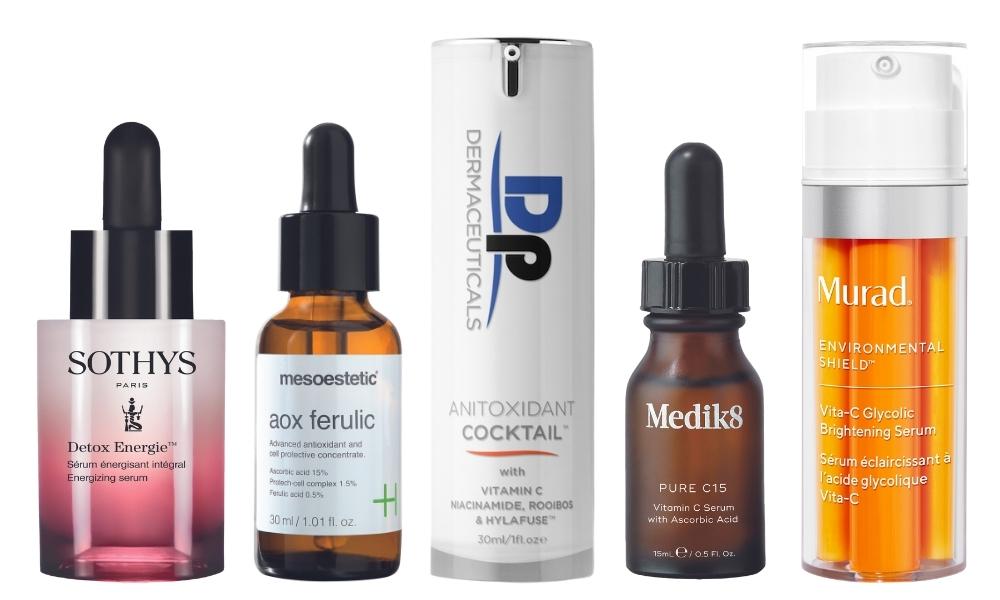With the number of product claims that exist in beauty it’s easy to be overwhelmed. While jargon and lofty statements have long accompanied new products, the more recent rise in consumers’ knowledge around ingredients means even more level of detail is now conveyed.
One area of confusion is around the inclusion of ingredients referred to as antioxidants. It’s generally accepted these are good for skin when applied topically, as well as in other areas of general health when consumed in ‘antioxidant-rich’ foods, but what are they?
What are antioxidants?
“Antioxidants are natural or synthesised molecules that help prevent damage generated by free radicals to cells,” explains Arantza Azparren, Training Manager of mesoestetic Pharma Group. “Antioxidants are found in many foods, including fruits and vegetables. They are also available as dietary supplements.”
Free radicals may sound a bit like the name of a bad ’80s rock band, but actually refer to unstable molecules that are known to damage healthy cells in our body. They are caused and created by myriad factors. Some are formed during normal processes within the body but others are from exposure to environmental factors we experience every day, from air pollution to UV rays.
“Free radicals attack our cells, breaking down cell walls and dislodging electrons,’’ says Linda Sharrem, skincare trainer for Murad. “Once cells are damaged, it creates what we call a ‘ping pong effect’ where the cells crash into each other to steal electrons to stabilise. Antioxidants sacrifice themselves and loan the cells electrons which then neutralise and stop the ping pong effect, keeping the cell healthy and intact.” Without antioxidants, the cell will be a dying cell and when it comes to skin, this can lead to accelerated ageing and other skin conditions, she says.
What is their purpose in skincare?
“Antioxidants prevent oxidation by neutralising free radical damage, which is basically like an apple or banana going brown,’’ says Sharrem.
“Free radical damage to our skin looks like premature ageing, dark spots, inflammation, dryness and wrinkles. Antioxidants neutralise free radical damage, keeping the cells strong and healthy, thereby reducing and slowing down the ageing process.”
While it’s possible to consume antioxidants within our diet daily, she says internal cells tend to take all of these goodies first, suggesting skin is then the last place to receive any of the benefits.
“Therefore, topical application is so important. We can make this work hard for our skin from inside out and outside in. It’s why antioxidants and SPF are our best anti-ageing skincare picks.”

L-R: Sothys Detox Energie Energizing Serum; Mesoestetic AOX Ferulic; Dp Dermaceuticals Antioxidant Cocktail; Medik8 Pure C15 Vitamin C Serum with Ascorbic Acid; Murad Vita-C Glycolic Brightening Serum
Which forms are beneficial for skin?
There are many antioxidants, but some commonly used in skincare are:
Vitamin C Well known as a powerful antioxidant and widely used and recommended by skin health professionals, it comes in many forms. “It neutralises free radical damage but is also needed for a healthy skin immune system, for healing and boosting collagen production,” says Linda Sharrem. It’s also touted for improving uneven skin tone and brighten dull skin so it’s visibly more radiant.
Vitamin E Also long used as an antioxidant, it is also said to have other benefits like helping soothe inflammation, maintaining a strong skin barrier, smoothing texture, helping skin to heal from injury and surface scarring.
Green Tea Along with antioxidant properties it is said to have soothing and calming properties that treat skin conditions like inflammation and redness.
Resveratrol This is another potent antioxidant that’s found in plants and fruits like grapes, and some berries and nuts. Fairly new to skincare, it’s nonetheless popular with naturally focused, botanically-led brands. Both Green tea and Resveratrol are part of a group of compounds called polyphenols, micronutrients that naturally occur in plants that have antioxidant properties as well as other potential health benefits.
Coenzyme Q10 – An antioxidant produced naturally by the body. It’s important for our cells’ ability to produce energy so they can function properly.
Stability and formulation challenges
A lot of products now boast they offer antioxidant benefits, but not all are created equal.
“It is very important to review the entire formula,” says Arantza Azparren. “Factors to take into consideration include the antioxidant molecule, its concentration, the pH, the size of the molecule, etc. Therefore, the antioxidant efficacy of the skincare will vary.”
Formulation and packaging is also key in maintaining the quality and efficacy of the ingredients. It’s why you will often find vitamin c products in opaque and/or airless bottles or separating water and oil soluble ingredients into dual chamber pumps that mix only when dispensed.
“Some antioxidants in skincare are notoriously difficult to work with due to stability issues,” says Daniel Isaacs, Director of Research at Medik8, mentioning Vitamin A, vitamin c and Oxyresveratrol (Oxy-R), specifically.
“These ingredients are sensitive to things like light, heat and air. Using unstable actives on the skin can cause irritation, or even skin damage over time. An example being ascorbic acid, the purest form of vitamin c which remains the most difficult to stabilise.”
He says Medik8 has undertaken specific measures to stabilise the vitamin c in its Pure C15 Serum. “From producing the formula in a nitrogen chamber to help prevent the fragile molecule from coming into contact with air, to teaming the ascorbic acid up with a rechargeable antioxidant network within the formulation. Innovative stabilisation techniques are the key to making the most out of our active ingredients.”
Azparren adds that using derivatives of vitamin c increases stability and can be used in more formulas, even in water-based formulations.
“Sometimes, vitamin c can also be found in products where it is presented in powder separated from the rest of the product and is activated when the container is opened.”
Better Together
Combinations of antioxidants are often used together and paired in the right formulations can support each other and can better the results in skin.
“For example, it is common to find vitamin c and vitamin E paired together, as vitamin E tends to lose its hydrogen atoms forming a radical,” says Azparren.
“This radical is capable of being regenerated by vitamin c. Therefore, when both are present in the same formula, they enhance its antioxidant action.”
When to apply
While each product will have its own directions, in general they can be used at both ends of the day.
“Applying antioxidants during the day will help us to prevent the appearance of oxidative damage,” advises Azparren, “While the antioxidants applied as part of our PM routine will help us to visibly counteract the oxidative damage produced during the day – therefore, antioxidants can be applied both, day and night.”







